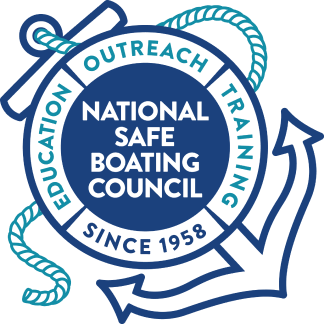Carbon Monoxide, the “Silent Killer” of Boating,
Is Preventable Through Awareness
Bristow, VA (July 2, 2013) – Carbon monoxide (CO) poisoning is a silent killer in the world of boating. The National Safe Boating Council (NSBC) reminds boaters about the danger of CO poisoning and how to prevent the potential for poisoning.
“Carbon monoxide poisoning is not new, but this hazard is responsible for boating fatalities each year,” said Virgil Chambers, executive director of the National Safe Boating Council. “Carbon monoxide can collect within, alongside or behind a boat, and, what’s scary is it does not have to be in an enclosed compartment to be a danger to unaware swimmers or others in the area.”
Just this past weekend, a 22-year-old man was pronounced dead at the scene by carbon monoxide poisoning while boating on Bear Lake in Utah. It was originally thought of as heat stroke due to dehydration, yet turned out to be carbon monoxide poisoning.
Carbon monoxide is a deadly gas produced any time a carbon-based fuel, such as gasoline, propane, charcoal, or oil burns. It is colorless, odorless and tasteless. Sources on your boat include gasoline engines, generators, cooking ranges, and space and water heaters.
Symptoms of carbon monoxide poisoning may include: irritated eyes, headache, nausea, weakness and dizziness. Sometimes it may be confused with seasickness or intoxication. These symptoms are early stages and may last for only a brief period of time before unconscious and death occurs. It has been proven that prolonged exposure to low concentrations or very short exposure to high concentrations of CO can lead to death.
“This is the second case that I know of this year that was caused by boaters occupying the rear of a ‘ski’ boat while the engines are running,” remarks Robert L. Baron, MD, Medical Advisor at Glen Canyon National Recreation Area. “Everyone must know where a boat’s exhaust pipes are and must not be near them whether the boat is stationary or moving. It seems impossible that someone could be killed in the open air, but these are two more cases
that prove it will continue to happen unless we remove the people from the poison.”
Here’s some potential causes for CO poisoning and how they can be prevented:
- CO incidents can occur within the cabin or other enclosed areas. Exhaust leaks, the leading
cause of death by carbon monoxide, can allow carbon monoxide to migrate throughout the
boat and into enclosed areas. - Slow speeds or idling in the water can cause carbon monoxide gas to accumulate in the
cabin, cockpit, bridge, and aft deck, even in an open area. - Swimming near or under the back deck or swim platform when exhaust is being emitted
from the engine or a generator can be fatal. Carbon monoxide from exhaust pipes of inboard
engines, outboard engines and generators build up inside and outside the boat in areas near
exhaust vents. - Check your boat’s exhaust system (all pipes and hoses) for cracks, holes or other
deterioration. If you believe you hear a leak (remember you won’t smell it or see it if CO is
leaking) have it checked out by a qualified marine mechanic. - Have properly working carbon monoxide detectors on your boat. Keep them supplied with
fresh batteries. - Do not confuse carbon monoxide poisoning with seasickness, intoxication, or heat stress. If someone on board complains of irritated eyes, headache, nausea, weakness, or dizziness, immediately move the person to fresh air, investigate the cause and take corrective action.
Seek medical attention, if necessary. Remember, CO poisoning can happen even when a person is sitting in the open air.
This summer, be aware of the potential causes of carbon monoxide and the syptoms that people may exhibit when poisoned by CO. Ensure that your boat is in working order to diminish the risk of CO poisoning. If you or someone on your boat is showing symptoms of
CO poisoning, don’t wait – call 911 immediately. To learn more about CO poisoning and prevention techniques, visit USCGBoating.org/safety/carbon_monoxide.aspx.
About the National Safe Boating Council
The National Safe Boating Council (NSBC) is the foremost coalition for the advancement and promotion of safer boating through education, outreach, and training. The NSBC accomplishes this mission by promoting outreach and research initiatives that support boating education and safety awareness; improving the professional development of boating safety educators through training; and developing and recognizing outstanding boating safety programs. To learn more about the NSBC and its programs, visit SafeBoatingCouncil.org.


